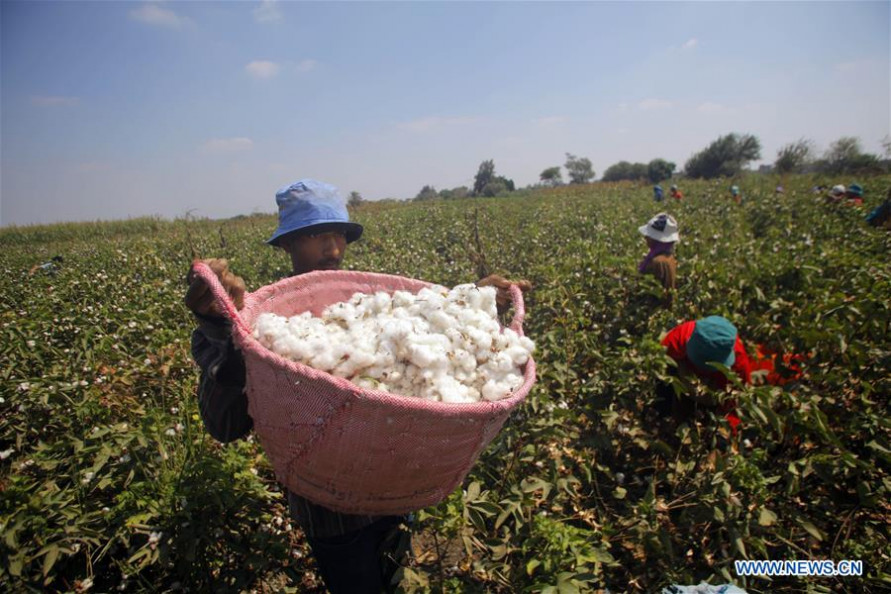AL-MAHALLA AL-KUBRA, Egypt (Reuters) - Behind an unassuming, scruffy perimeter wall, Egypt’s largest textiles factory has languished for decades, losing money and breeding discontent as the economy shifted away from socialist-style planning.
The plan shows how the government has reversed a trend under President Hosni Mubarak, who was ousted in 2011, of turning public enterprises over to the private sector, doubling down instead on its support of state firms.
It will also provide a crucial test of Egypt’s ability to boost job-creating industry as it exits a three-year reform program backed by the International Monetary Fund.
Economists have praised the reforms for contributing to stability and growth, which was a robust 5.6% in the third quarter. But outside the energy sector, the economy has been shrinking.
The story of the Mahalla factory reflects a longer-term decline.
It was set up by Egyptian businessmen in 1927 to make textiles from Egypt’s renowned long-staple cotton, until then exported raw to manufacturers abroad.
But the country’s army rulers nationalized it in the early 1960s along with most of Egyptian industry, and Egypt’s textile sector was later overtaken by competition from Asia.
Apart from a brief period of hiring in the post-2011 political turmoil, the factory had all but stopped taking on new workers for decades, allowing the workforce to shrink as employees retired or resigned.
At a small grocery store opposite the company gate, workers last month said the company’s three plants were operating at no more than 40% capacity.
“Machines have stopped and the three plants are not productive. Every month, salaries are 10 days late and annual bonuses are delayed,” said one worker who asked not to be identified.
TURNAROUND PLAN
Early this year the Ministry of Public Enterprise unveiled a 21 billion Egyptian pound ($1.3 billion), 30-month plan to remake the state textile industry, which accounts for 65% of Egypt’s textile manufacturing.
It plans to merge 23 textile companies into 10, shift the operations of some plants to others nearby, and shut down further plants altogether to concentrate production in Kafr al-Dawar near Alexandria, Helwan in southern Cairo and Mahalla, a city of half a million people.
The Mahalla plant will absorb the operations of the adjacent, loss-making El Nasr Spinning, Weaving and Dyeing Co.
The government wants to sell some assets, mainly land, to finance new machinery to quadruple capacity, and is considering expanding into labor-intensive garment production, Public Enterprise Minister Hisham Tawfik told the American Chamber of Commerce in April.
Management compensation will be improved and linked to performance.
The government was studying other loss-making sectors including chemical, pharmaceutical and metallurgical industries to develop turnaround plans, Tawfik said. He confirmed to Reuters this week that the plan was still on track.
Egypt needs to absorb 3.5 million new entrants to the labor market over the next five years, according to the IMF, but opening to the private sector - which international lenders say is crucial to longer-term economic success - has faltered.
Economists say the increasing state presence may come at the expense of growth, and that the goal of reviving state industry seems motivated by a mix of ideology, a desire to tighten economic and political control, and concern that labor discontent could ignite broader unrest.
Economic grievances were widely cited during protests that broke out in Cairo and several other cities, including Mahalla, in late September.
But the state faces a daunting task turning the textiles sector around.
“We need to understand their economics. What sort of return on investment do they foresee?” said Mohamed Kassem, a board member of the Egyptian Federation of Industry and textile executive.
“If their calculations are not accurate they will lose a lot of money. If they are able to compete with India and China then they’ll hit a home run.”
LOSSES
Egypt’s 23 spinning and weaving companies had a combined loss of more than 2.59 billion pounds in the year to June 2018, Finance Ministry figures show. Only one, Port Said for Spinning and Weaving, made a profit - at 5.2 million pounds.
The Mahalla factory lost 667.2 million Egyptian pounds in the year to June 2018 on revenue of only 1.07 billion pounds, according to the most recently published figures. Assets stood at 1.57 billion and liabilities at 4.9 billion pounds.
The number of employees is now 18,000, Tawfik said in April, down from around 35,000 at its peak in the 1970s and 1980s.
The factory, spread over more than 600 acres, has long been a hotbed of political dissent.
Protests over pay and working conditions in December 2006 soon spread to other manufacturing centers in Egypt, and in 2011 its workers went on strike in the lead-up to Mubarak’s overthrow.
Services and infrastructure in Mahalla and surrounding villages, including its sewage network and roads, had been steadily deteriorating and unemployment had increased, the factory worker said.
“It is the economic and living conditions that drive people to demonstrate,” he added.
Writing by Patrick Werr; Editing by Aidan Lewis and Dale Hudson


